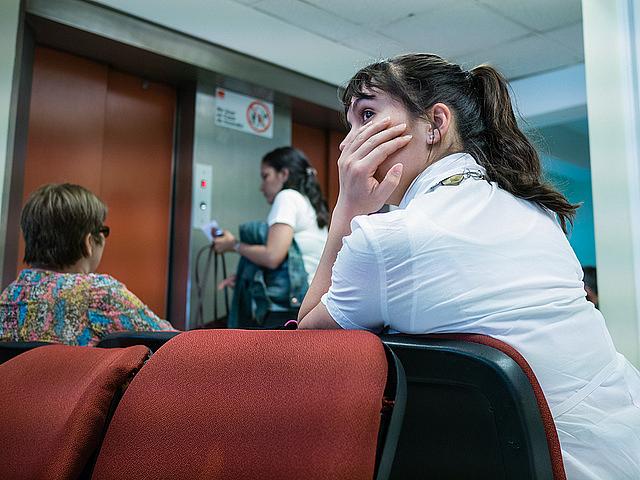For community clinic, health reform drives innovations and uncertainty

(Francisco Osorio via Flickr)
As recently as a few years ago, patients at the Native American Health Center in Oakland did not always follow up when they received a mental health referral.
Not because they didn’t need help. Headquarters for the Native American Health Center (NAHC) is located on International Boulevard in East Oakland and it treats not only Native Americans but also Latino and other residents who live nearby. The area suffers from a high crime rate, and many patients show up traumatized from economic hardship, domestic violence and substance abuse.
The lack of referral follow-ups had to do partly with logistics. The clinic’s licensed social workers were located in a building down the street from the main clinic. That was enough of a barrier to stop patients from going. It wasn’t just a problem for mental health services. NAHC patients suffer high rates of diabetes and heart disease, and these patients often did not follow up on referrals to a nutritionist.
So NAHC decided to make some changes. The work started before Obamacare had been officially set into action, but already, the federal government was pushing community clinics to adopt a more integrated approach to health care, which it believes is better for patient care.
NAHC brought a licensed social worker into the main building, and put a nutritionist down the hall from the clinic’s main treatment area. Now primary care providers do what’s called a “warm handoff.” If a patient has mental health or dietary issues, a provider will walk them over to a social worker or nutritionist, who will either see them immediately or schedule an appointment. The “warm handoffs” have been so successful that NAHC has hired two more social workers to meet the demand.
“It allows them to make a connection right there,” said Ana O’Connor, chief operating officer of NAHC.
This is one of many ways that NAHC is trying to improve care with its 12,000 patients, many of whom are suffering from multiple diagnoses when they enter one of its clinics in Oakland or San Francisco. The changes may make sense for patients, but there are also financial factors at play. The health center and other community clinics around the state expect that in a few years, patient outcomes — not the number of patient they see — will determine how much they are paid by the federal government, insurers and the state.
“How healthy are you keeping your population? No longer can you plan on (being paid) visit-by-visit. It will be based on health outcomes,” O’Connor said.
Currently, community clinics, hospitals, and private providers are reimbursed based on the services they provide. But by the end of 2018, Medicare, the nationwide insurance program for seniors and disabled people, plans to make 50 percent of payments on the basis of value and quality of outcomes.
NAHC doesn’t have many Medicare patients, but the federal government has also announced that it wants convert Medicaid reimbursements to outcomes-based payments. The plans are not yet finalized, but representatives from the California Department of Health Care Services are meeting with community clinics, insurers, and the California Primary Care Association to come up with a plan, possibly also for 2016. At this point, no one knows exactly how outcomes-based Medicaid reimbursements will work.
Before Obamacare kicked into gear in October 2013, NAHC treated many uninsured patients who could not afford their visits to the clinic. Now a lot of those same patients qualify for Medicaid. In theory, that’s a good thing. NAHC can now be reimbursed for their care. But with the push towards outcomes-based reimbursement, the clinic still feels nervous about survival.
Adding to the pressure, safety net clinics such as NAHC must now compete for newly insured patients and work hard to keep the ones it has. Under Medicaid managed care plans, patients have many more choices for where they get care.
In her three years at NAHC, O’Connor’s job has been able to guide the center through the big changes prompted by the Affordable Care Act.
“It has not been a smooth road, of course,” she said. “It’s changing behavior.”
Changing behavior, whether for patients, providers or a community clinic, isn’t easy. Because the changes are so big, O’Connor doesn’t believe all of California’s community clinics will survive in the post-Obamacare era. But she’s doing her best to make sure that NAHC sticks around.
Photo by Francisco Osorio via Flickr.

